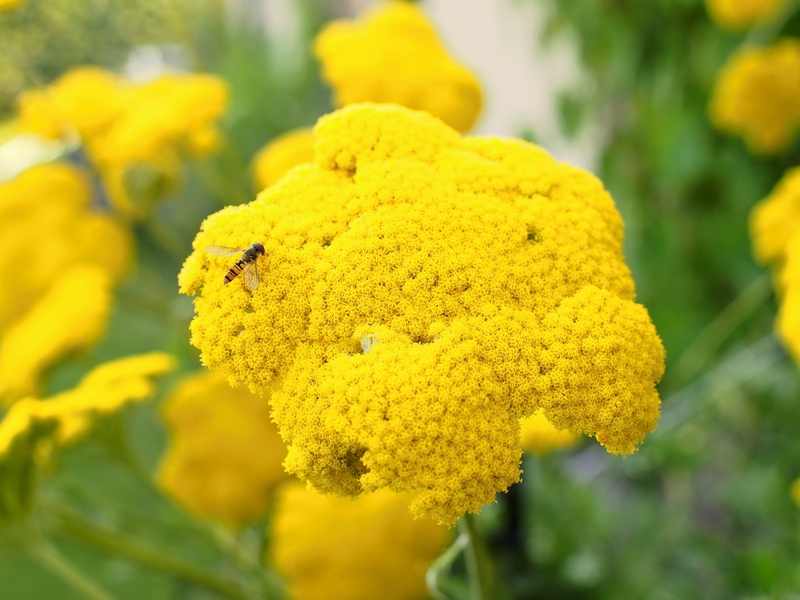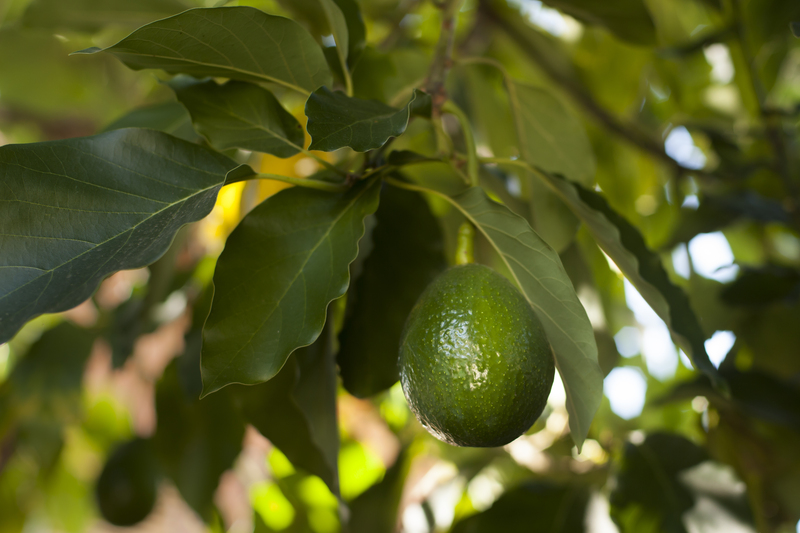Gardening Harmony: Balancing Flora and Fido
Posted on 14/08/2025
Gardening Harmony: Balancing Flora and Fido
Gardening is a cherished hobby, offering tranquility and beauty to outdoor living spaces. However, for pet owners, achieving a harmonious blend of flourishing flora and a joyful, safe environment for Fido (or any pet) can be a challenging yet incredibly rewarding endeavor. Harmonizing your garden with your dog's needs doesn't have to mean sacrificing lush landscapes or your canine companion's happiness. In this comprehensive guide, we'll explore practical strategies for creating a balanced oasis where plants and pets thrive together.
Why Pursue a Pet-Friendly Garden?
Every garden tells a story. For pet owners, that narrative often includes playful paws and wagging tails. Traditional landscaping may not always account for curious noses or digging instincts, but with a little planning, you can cultivate an outdoor space that delights both you and your dog. Among the top reasons for achieving gardening harmony between flora and Fido are:
- Safety: Eliminate toxic plants and hazards to protect your pet's health.
- Joy: Allow your dog to explore, play, and relax without disruption or danger.
- Sustainability: Choose resilient, safe flora that withstands enthusiastic canine activity.
- Beauty: Balance functional pet areas with vibrant, attractive planting arrangements.

Understanding Your Dog's Garden Behaviors
Each dog interacts with outdoor spaces differently. Some love to dig up the beds, while others may chew on plants or run wild through the vegetation. Recognizing your dog's garden behaviors is essential before making changes. Common behaviors include:
- Digging--for fun, to cool off, or to hunt small animals.
- Chewing plants or lawn grass--often due to playfulness, boredom, or curiosity.
- Running paths and patrols--dogs often create "dog runs" along fences or favorite routes.
- Marking territory--urine can affect grass and plants.
- Relaxing in soft, shady spots--many dogs enjoy lounging where the ground is cool and comfortable.
By observing your dog, you can design solutions that both meet their needs and protect your plants.
Choosing Pet-Safe Plants for Harmonious Gardens
Selecting dog-safe plants is the cornerstone of a pet-friendly landscape. Many common garden plants, while beautiful, can be toxic to pets. The good news is there are plenty of enchanting, non-toxic alternatives! Here are some top flora choices safe for dogs:
- Marigolds (Tagetes)
- Petunias (Petunia spp.)
- Snapdragons (Antirrhinum)
- Sunflowers (Helianthus)
- Camellias (Camellia japonica)
- Fuchsias (Fuchsia spp.)
- Spider Plants (Chlorophytum comosum)
- Rosemary (Rosmarinus officinalis)--safe and fragrant!
- Bamboo palm (Chamaedorea seifrizii)
Conversely, avoid or remove plants that can be harmful to your dog. Common hazards include:
- Oleander
- Azalea
- Sago Palm
- Foxglove
- Lilies
- Rhododendron
- Daffodil bulbs
Always research new plants before introducing them to your garden. For comprehensive lists, the ASPCA provides an authoritative resource concerning pet toxicity.
Designing for Both Flora and Fido: Landscaping Strategies
Thoughtful garden design will help keep both plants and pets happy. Follow these principles for a garden in perfect balance:
1. Zoned Gardens
Set aside zones for active dog play and quieter, protected plant areas. Paths or fencing (even decorative, low-profile fences) can help define boundaries. Pathways of mulch, stone, or sturdy ground cover can reduce wear and tear while guiding your dog away from delicate beds.
2. Raised Beds and Containers
Elevate your flora out of reach by using raised beds or large containers, offering both better soil control and pet protection. This strategy is especially effective for herbs, vegetables, and more delicate ornamentals.
3. Dog-Friendly Ground Covers
Replace sensitive turfgrass with durable, non-toxic ground covers. Some excellent options include:
- Clover--soft for canine feet and resistant to pet urine.
- Buffalo grass--low growing and hardy.
- Irish moss--gentle on paws and easy to maintain.
- Elfin thyme--fragrant and resilient.
4. Shaded Retreats
Dogs love cool spots to rest on hot days. Plant shrubs and trees that provide shade, paired with soft mulch or bare earth as a canine lounge. Avoid cocoa mulch, which can be toxic to pets; instead, opt for pine or cedar mulch, which also helps discourage flea infestations.
5. Digging Zones
For dig-happy pups, set up a designated digging area with loose soil or sand and bury toys or treats to encourage use. Surround the area with hardy border plants to contain mess.
6. Water Features and Hydration
Keep water bowls in shaded areas, or incorporate a small, shallow pet-friendly water feature--just a shallow pond or bubbler for safe splashing. Ensure all water sources are clean and chemical-free.
Maintaining Gardening Harmony
A harmonious setting requires ongoing attention. Consider these tips for maintaining a balance of flora and fido:
- Mulch and Amendments: Use pet-safe mulches, and avoid fertilizers or insecticides that could endanger your pet.
- Regular Inspection: Walk your garden often, checking for escape routes, chewed plants, or emerging hazards.
- Reinforce Training: Teach your dog to avoid specific beds or areas. Use rewards and positive reinforcement.
- Repair and Rotate: Repair digging damage quickly, and rotate worn zones to give plants time to recover.
- Seasonal Adjustments: Update your approach as your garden changes with the seasons or as your pet ages.
Garden harmony is a process, not just a destination!
Creative Features for Pet and Plant Bliss
Ready to add a touch of whimsy and function to your garden? Incorporate creative features that engage Fido and embellish your flora:
- Doggy agility areas--use logs, tunnels, or low hurdles for canine exercise amid flower beds.
- Viewing windows--set clear panels in fences so your dog can look out safely (and reduce anxiety and digging).
- Lawn art and stepping stones--both decorative and practical for navigating planted spaces.
- Living walls or vertical gardens--maximize greenery while keeping it away from playful pups.
- Puppy-safe herb gardens--with parsley, basil, and rosemary for culinary and aromatic delight.
Common Mistakes to Avoid in Combining Dogs and Gardens
Even the most dedicated gardeners can slip up when balancing flora and Fido. Avoid these pitfalls to achieve true gardening harmony:
- Ignoring toxic plant risks--always cross-check before planting.
- Overusing chemicals--herbicides, pesticides, and even some organic compounds can be dangerous for pets.
- Neglecting training--a well-trained dog is a better garden companion.
- Underestimating boredom--dogs left without stimulation will make their own fun, often at your plants' expense.
- Weak barriers--use durable fencing or decorative borders to truly protect prized flora.
Frequently Asked Questions: Gardening with Dogs
What plants are best for a dog-friendly garden?
Choose non-toxic, sturdy plants such as marigolds, petunias, camellias, and spider plants. Avoid sago palm, foxglove, and azalea.
How can I stop my dog from digging up my garden?
Provide a separate digging area, enforce boundaries with low fencing, and redirect your dog's attention with toys and activities. Also, ensure they're not seeking coolness or hunting pests.
Are organic fertilizers safe for dogs?
Not all organic products are pet-safe. Bone meal, blood meal, and fish emulsion can be enticing but dangerous if ingested. Always store fertilizers securely and choose options labeled as pet-friendly.
How do I fix yellow spots caused by dog urine?
Water the area immediately to dilute. Consider planting clover, which resists urine damage, or use grasses like ryegrass and fescue. Training your dog to use a specific potty spot can also help.

Bringing It All Together: Your Guide to Gardening Harmony
Creating a flourishing, pet-friendly garden is both achievable and deeply satisfying. Every yard is unique, as are the personalities of the plants and pets that inhabit it. Through careful selection, zoned landscaping, and attentive maintenance, you'll foster a space where the beauty of flora and the vitality of Fido are in perfect balance. Remember:
- Research your flora for pet safety.
- Design zones that suit both plant and pet needs.
- Use resilient ground covers and barriers.
- Keep your dog mentally and physically engaged outdoors.
- Monitor and adjust your gardening strategy regularly.
With the right approach, you can enjoy the best of both worlds: a resplendent garden and a happy, healthy four-legged friend by your side. Discover the joys of gardening harmony--your plants and your pup will thank you!
Additional Resources for Pet-Friendly Gardening
- ASPCA List of Toxic and Non-Toxic Plants
- Royal Horticultural Society: Gardening with Pets
- Humane Society: Dog Safety in Your Yard
Let the garden be your sanctuary, and Fido's paradise too. Achieve gardening harmony with a little creativity, patience, and love!



